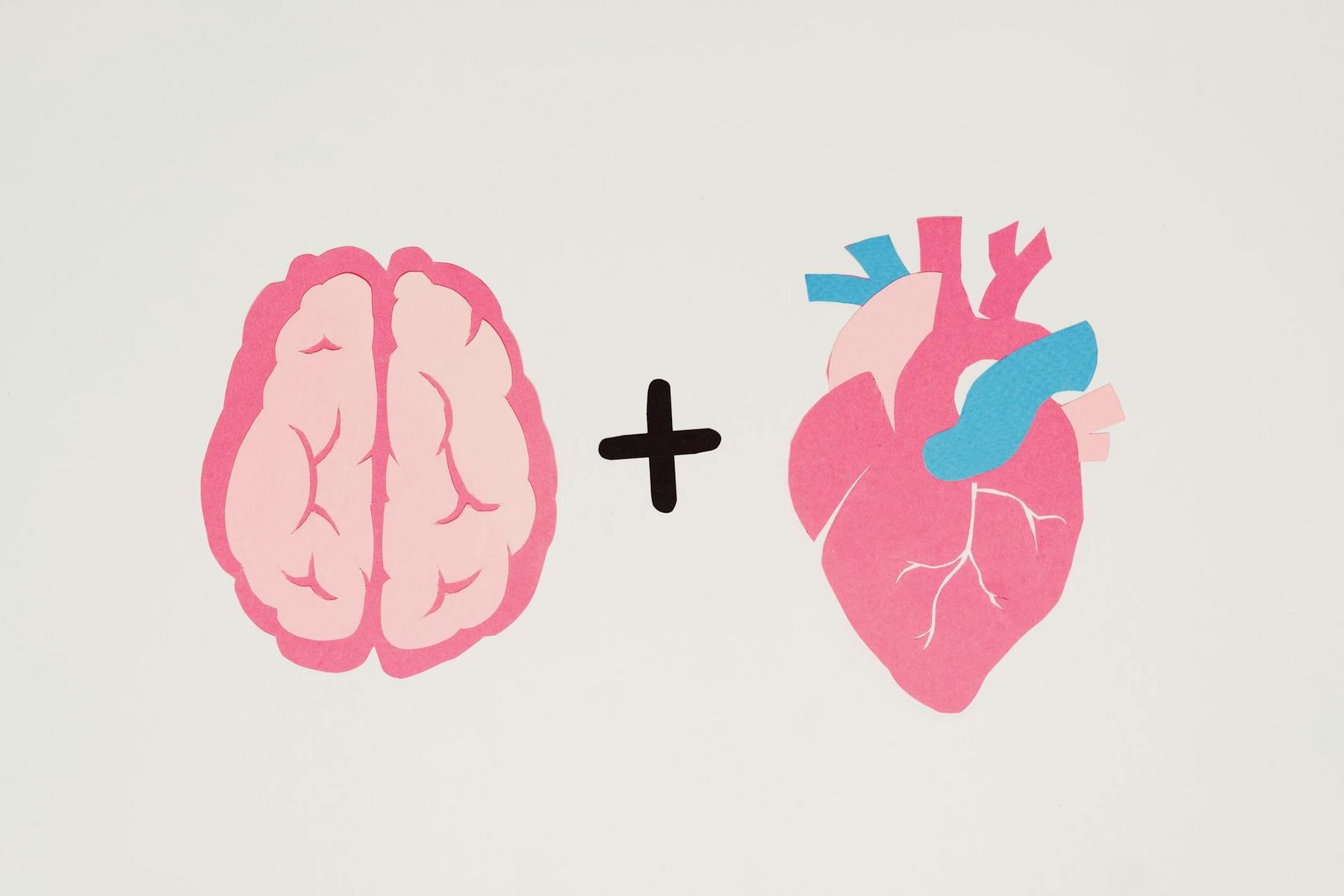Every night, as consciousness fades and the world around us dissolves, our brains embark on one of neuroscience’s most fascinating journeys. Within the depths of Rapid Eye Movement (REM) sleep, vivid narratives unfold, emotions surge, and memories consolidate in ways that continue to puzzle researchers worldwide. Despite decades of study, the intricate relationship between dreams and REM sleep remains one of the most captivating frontiers in sleep science, with groundbreaking discoveries in 2025 reshaping our fundamental understanding of these nocturnal phenomena.
Recent research breakthroughs have illuminated the sophisticated neural orchestrations that occur during REM sleep, revealing how our sleeping minds process experiences, regulate emotions, and potentially enhance creativity. As Australian sleep researchers contribute significantly to this global scientific endeavour, we’re witnessing unprecedented insights into the mechanisms that govern our dream states and their profound impact on cognitive function and mental wellbeing.
What Happens During REM Sleep and Dream Formation?
Dreams and REM sleep represent a remarkable neurobiological symphony that occurs during specific phases of our sleep cycle. During REM sleep, which typically accounts for 20-25% of total sleep time in healthy adults, the brain exhibits activity patterns remarkably similar to those observed during waking consciousness, yet the body remains in a state of temporary paralysis known as muscle atonia.
The neural architecture of REM sleep involves complex interactions between multiple brain regions, including the pons, thalamus, and cortical areas. The pontine brainstem initiates REM sleep through the activation of cholinergic neurons, which trigger the characteristic rapid eye movements and create the optimal conditions for vivid dream experiences. During this phase, neurotransmitter systems undergo dramatic shifts, with acetylcholine levels rising whilst noradrenaline, serotonin, and histamine concentrations decrease significantly.
Dreams themselves emerge from this unique neurochemical environment, where the brain’s default mode network becomes highly active whilst the prefrontal cortex, responsible for logical reasoning and reality testing, shows reduced activity. This neurological configuration explains why dreams often feature bizarre narratives, impossible scenarios, and emotional intensities that would seem illogical during waking consciousness.
The visual cortex, particularly active during REM sleep, generates the rich imagery characteristic of dreams, whilst the limbic system, including the amygdala and hippocampus, contributes to the emotional content and memory-related elements that frequently appear in dream narratives. This sophisticated interplay between brain regions creates the multisensory experiences that define our dream states.
How Do Scientists Study Dreams and REM Sleep Patterns?
Contemporary dream and REM sleep research employs sophisticated methodologies that have evolved dramatically from early observational studies. Polysomnography remains the gold standard for sleep research, utilising electroencephalography (EEG) to monitor brain waves, electromyography (EMG) to track muscle activity, and electrooculography (EOG) to record eye movements that characterise REM phases.
Advanced neuroimaging techniques have revolutionised our understanding of dreams and REM sleep. Functional magnetic resonance imaging (fMRI) allows researchers to observe real-time brain activity during sleep, revealing which neural networks activate during different dream phases. Positron emission tomography (PET) scanning provides insights into neurotransmitter activity and metabolic processes occurring during REM episodes.
Recent technological innovations include high-density EEG systems that can monitor hundreds of electrode sites simultaneously, offering unprecedented resolution in tracking neural oscillations during REM sleep. Australian research institutions, particularly the Centre for Sleep Science at the University of Western Australia, have pioneered techniques combining multiple monitoring modalities to create comprehensive pictures of sleep architecture and dream activity.
Dream content analysis has also advanced significantly, with researchers now employing sophisticated coding systems to categorise dream elements, emotional content, and narrative structures. Some laboratories utilise targeted memory reactivation techniques, where specific sounds or cues presented during learning are replayed during REM sleep to examine memory consolidation processes.
| Sleep Stage Characteristics | NREM Sleep | REM Sleep |
|---|---|---|
| Brain Wave Activity | Slow, synchronised delta waves | Fast, desynchronised waves similar to waking |
| Eye Movement | Minimal or absent | Rapid, jerky movements |
| Muscle Tone | Reduced but present | Complete atonia (paralysis) |
| Dream Occurrence | Rare, less vivid | Frequent, vivid, and complex |
| Memory Consolidation | Declarative memory processing | Procedural and emotional memory integration |
| Neurotransmitter Activity | Balanced levels | High acetylcholine, low noradrenaline/serotonin |
| Percentage of Total Sleep | 75-80% | 20-25% |
What Role Do Dreams Play in Memory and Emotional Processing?
The relationship between dreams, REM sleep, and cognitive processing represents one of neuroscience’s most compelling research areas. Contemporary evidence strongly suggests that REM sleep and associated dream activity play crucial roles in memory consolidation, emotional regulation, and creative problem-solving.
Memory consolidation during REM sleep involves the transfer of information from temporary storage in the hippocampus to more permanent cortical locations. This process, known as systems consolidation, appears intimately connected to dream content, with studies indicating that dream narratives often incorporate recently learned information in novel combinations. The brain essentially rehearses and integrates new experiences during REM sleep, strengthening neural pathways associated with important memories whilst potentially discarding irrelevant information.
Emotional processing during dreams and REM sleep involves sophisticated interactions between the amygdala, prefrontal cortex, and hippocampus. Dreams provide a unique environment where the brain can process emotional experiences without the constraints of waking consciousness, potentially allowing for adaptive responses to stressful or traumatic events. This emotional regulation function may explain why REM sleep disruption often correlates with mood disorders and emotional instability.
Research has demonstrated that REM sleep deprivation significantly impairs creative problem-solving abilities, suggesting that the unique neural configuration during this sleep phase facilitates innovative thinking. The reduced activity in the dorsolateral prefrontal cortex, combined with increased communication between distant brain regions, may create optimal conditions for forming novel associations and generating creative insights.
Dreams and REM sleep also appear crucial for procedural memory consolidation, with studies showing that complex motor skills and cognitive strategies benefit from adequate REM sleep. Athletes and musicians often report improved performance following nights with sufficient REM sleep, supporting the notion that dreams contribute to skill refinement and optimisation.
Why Do Some People Experience Vivid Dreams While Others Don’t?
Individual variations in dream recall and vividness result from complex interactions between genetic factors, neural architecture, sleep patterns, and psychological characteristics. Research has identified several key factors that influence dream experiences and the ability to remember them upon awakening.
Neurological differences play a significant role in dream recall variations. Individuals with higher dream recall typically show increased activity in the temporo-parietal junction and medial prefrontal cortex during both REM and NREM sleep. These brain regions are associated with attention and memory encoding, suggesting that enhanced neural responsiveness during sleep facilitates dream retention.
Sleep architecture variations significantly impact dream experiences. People who experience more frequent awakenings during or immediately after REM phases are more likely to recall dreams, as the transition from REM to waking consciousness appears crucial for dream consolidation into conscious memory. Those with more consolidated sleep may experience equally vivid dreams but lack the awakening opportunities necessary for recall.
Personality traits also influence dream recall and content. Studies indicate that individuals scoring higher in openness to experience, creativity, and absorption tend to report more frequent and vivid dreams. These personality characteristics may be associated with greater attention to internal mental states and enhanced memory for subjective experiences.
Age-related changes affect both REM sleep duration and dream recall. Whilst young adults typically spend more time in REM sleep and report frequent, vivid dreams, older adults often experience reduced REM phases and decreased dream recall. However, dream content complexity and emotional intensity may remain relatively stable across the lifespan.
How Has Our Understanding of Dreams and REM Sleep Evolved?
The scientific exploration of dreams and REM sleep has undergone remarkable transformation since the mid-20th century discovery of REM sleep phases. Early research focused primarily on describing sleep architecture and identifying the physiological correlates of dreaming, but contemporary investigations have revealed the sophisticated functional roles these phenomena serve.
Historical perspectives on dreams ranged from supernatural interpretations to early psychological theories, but the 1953 discovery of REM sleep by Eugene Aserinsky and Nathaniel Kleitman marked the beginning of empirical dream research. Initial studies established the basic relationship between REM phases and vivid dreaming, laying the foundation for decades of subsequent investigation.
The development of modern neuroimaging technologies has revolutionised our understanding of dreams and REM sleep. Rather than viewing dreams as mere byproducts of random neural activity, researchers now recognise them as sophisticated cognitive processes that serve essential functions in memory consolidation, emotional regulation, and creative problem-solving.
Contemporary theories of REM sleep function have evolved from simple activation-synthesis models to complex frameworks incorporating threat simulation, memory consolidation, and emotional processing components. The threat simulation theory suggests that dreams provide a safe environment for rehearsing responses to dangerous situations, whilst the memory consolidation hypothesis emphasises the role of REM sleep in strengthening and integrating learned information.
Recent research has also highlighted the importance of non-REM dream activity, challenging earlier assumptions that vivid dreaming occurs exclusively during REM phases. This expanded understanding has led to more nuanced models of sleep-dependent cognitive processing that acknowledge the contributions of multiple sleep stages to mental health and cognitive function.
What Do Recent Breakthroughs Tell Us About Dream Function?
The landscape of dream and REM sleep research has experienced unprecedented advancement in recent years, with groundbreaking discoveries reshaping our understanding of these phenomena. Cutting-edge research has revealed sophisticated mechanisms underlying dream formation and their crucial roles in cognitive function and mental wellbeing.
Recent studies have identified specific neural signatures associated with different types of dream content, suggesting that dreams are far more organised and purposeful than previously understood. Researchers have discovered that the brain exhibits predictable patterns of activity corresponding to different dream elements, including visual imagery, emotional content, and narrative structure. These findings indicate that dreams represent systematic cognitive processes rather than random neural noise.
Innovative research into lucid dreaming has provided unprecedented insights into consciousness during sleep. Studies demonstrate that trained individuals can achieve conscious awareness during REM sleep whilst maintaining the dream state, allowing for real-time communication between sleeping and waking researchers. These investigations have revealed that cognitive abilities during lucid dreams can rival those experienced during waking consciousness, suggesting that the sleeping brain retains remarkable processing capabilities.
The discovery of sleep-dependent brain cleaning mechanisms has also transformed our understanding of REM sleep function. Research has shown that the glymphatic system becomes highly active during sleep, clearing metabolic waste products and potentially toxic proteins from brain tissue. This cleaning function may be particularly important during REM sleep phases, when high neural activity generates significant metabolic byproducts.
Australian research institutions have contributed significantly to these advances, with studies examining the relationship between REM sleep, dreams, and various aspects of mental health. Local researchers have investigated how sleep architecture changes affect dream content and cognitive function, providing valuable insights for understanding sleep disorders and their treatment.
The Future of Dreams and REM Sleep Research
As we advance further into 2025, the study of dreams and REM sleep continues to unlock profound secrets about human consciousness and cognitive function. The convergence of advanced neuroimaging technologies, sophisticated analytical methods, and innovative experimental paradigms promises to deepen our understanding of these fascinating phenomena exponentially.
The implications of current research extend far beyond academic curiosity, offering potential applications in education, mental health treatment, and cognitive enhancement. Understanding how dreams and REM sleep contribute to memory consolidation and emotional processing may inform therapeutic approaches for various psychological conditions, whilst insights into sleep-dependent creativity could revolutionise approaches to problem-solving and innovation.
The sophisticated neural orchestrations that govern our nightly journeys into the world of dreams represent one of nature’s most remarkable achievements. As researchers continue to decode the mysteries of REM sleep and dream formation, we gain invaluable insights into the fundamental processes that shape human consciousness, memory, and emotional wellbeing.
How much REM sleep do adults need each night for optimal dream function and cognitive performance?
Healthy adults typically require approximately 1.5 to 2 hours of REM sleep per night, representing 20-25% of total sleep time. This occurs across multiple REM episodes that become longer and more frequent during the latter portion of the sleep cycle. Adequate REM sleep is essential for proper memory consolidation, emotional regulation, and cognitive function.
Can people improve their dream recall and REM sleep quality naturally?
Yes, several evidence-based strategies can enhance dream recall and REM sleep quality. Maintaining consistent sleep schedules, creating optimal sleep environments, and keeping dream journals immediately upon awakening can significantly improve dream retention. Additionally, ensuring adequate total sleep duration allows for complete REM cycles to occur naturally.
What causes nightmares and how do they differ from normal REM dreams?
Nightmares represent intense, frightening dreams that occur primarily during REM sleep phases, often causing awakening and significant distress. They differ from normal dreams in their emotional intensity, threatening content, and ability to cause persistent anxiety upon awakening. Nightmares may result from stress, trauma, sleep disorders, or disrupted REM sleep patterns.
Do dreams during different REM periods throughout the night vary in content or function?
Research indicates that dreams do vary across different REM episodes during the night. Early REM periods often feature more processing of recent events and emotional experiences, whilst later REM phases may involve more creative, bizarre, or problem-solving content. These variations likely reflect different aspects of memory consolidation and cognitive processing occurring throughout the sleep cycle.
How do sleep disorders affect REM sleep and dreaming patterns?
Various sleep disorders can significantly disrupt REM sleep architecture and dreaming patterns. For instance, sleep apnoea can fragment REM sleep, leading to reduced dream recall and impaired cognitive function, while REM sleep behaviour disorder may cause the temporary paralysis of REM sleep to fail, resulting in the physical enactment of dream content. Understanding these disruptions is crucial for proper diagnosis and management.













